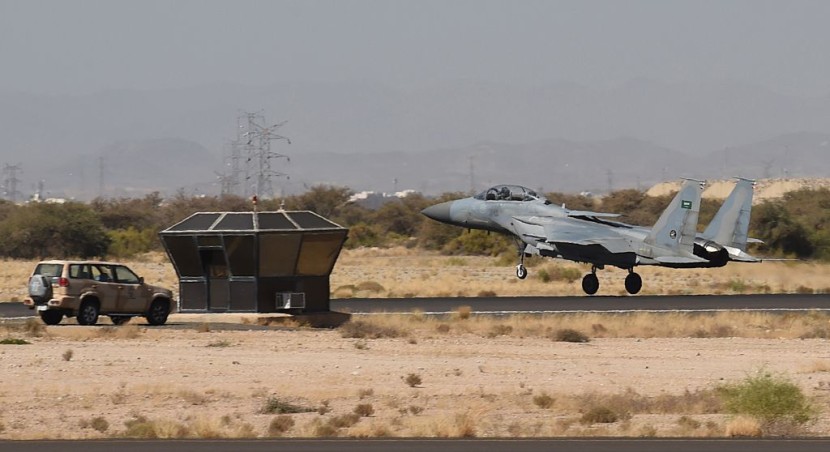
An incident on November 6 was reported by the Saudi Defense Ministry spokesperson, Brig. Gen. Turki Al-Maliki that a Saudi F-15 crashed, but the officers bailed out. Al-Maliki said a panel is probing the crash to determine if the avionics were compromised, states Arab News.
Did Iranian Electronic Warfare Cause the Crash?
The declaration by the Saudi defense ministry comes shortly after a video purportedly showing an Eagle jet crashing in Saudi Arabia was posted online, according to the Eurasian Times.
A 21-second-long short video that makes it appear to have been recorded by only a CCTV camera is doing the rounds on the internet, showcasing a warplane crashing, with internet users verbalizing that the jet might be an RSAF F-15 fighter.
While the plane's silhouette appears the same as an F-15 variant, it doesn't seem as if the aircraft in question is connected to the crash proclaimed by the Saudi Defense Ministry, particularly given that the mishap appears to have happened during the daytime. On the CCTV footage, the crash happened on October 25, not November 6.
Remarkably, the clip of the presumed Saudi jet crash in Taif surfaced just days after Iran announced unveiling a new ultra-long-range electronic warfare system similar to the Russian-made Krasukhas.
Supposing the aircraft is an F-15, it is uncertain if it is an F-15SA (Saudi Advanced) or an F-15C/D, although the latter would seem more probable. F-15C/Ds are flown by the No. 5 and 34 Squadrons of RSAF Wing 2 at King Fahad Air Base in Taif.
Read Also : SNAP Benefits 2023: Midterm Elections May Affect the Increase in Payments; Who Would Be Affected?
The SA is a two-seat variant of the F-15E Strike Eagle. It is asserted to be the most sophisticated F-15 variant, incorporating equipment from South Korea's F-15K Slam Eagle as well as Singapore's F-15SG, per Time Aerospace.
This fighter jet can be seen descending rapidly toward the ground, with no traces of fire observed on the aircraft before eventually crashing. Based on a Russian military portal, the airplane's control systems might have failed because of electronic jamming, according to Avia.
Once Iran revealed the deployment of a new electronic jamming with a goal interaction range of up to 400 kilometers, this was one of the explanations for why the Saudi jet crashed.
Views on the Iranian Electronic Warfare System
According to Afshin Naderi Sharif, Iranian Deputy Defense Minister for Industrial and Research Affairs, the EWS was capable of jamming an adversarial surveillance aircraft at a distance of 400 kilometers on October 23.
Krasukha is a non-stationary, ground-based electronic jamming system designed primarily for airborne radio-electronics, including unmanned aerial vehicles and radar-guided aerial systems.
Taif is much more than 1,000 kilometers away from Iran. Considering the fighter's maximum speed of 2,575 km/h, the jet should have been jammed at least thirty minutes before approaching Taif, which seems pretty doubtful. Experts believe the plane that crashed in Irkutsk, Siberia, was a Russian Su-30.
Electronic jamming is not possible because Iran's claim is false. A disastrous control malfunction is a more probable explanation. If it were a pilot-initiated crash or a problem with the airplane, this would only be confirmed in a public inquiry.
One of the reasons is negative G, which induces blood to collect in the head and swelling of the face, essentially forcing the lower eyelids over the eyes.
Tehran's claim could be inaccurate if the Iranian electronic warfare took down the Saudi F-15 or if it is just the avionics.









